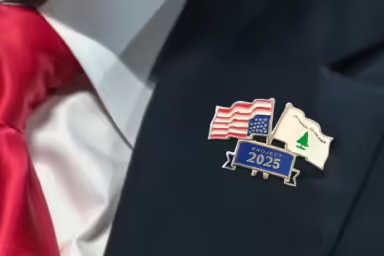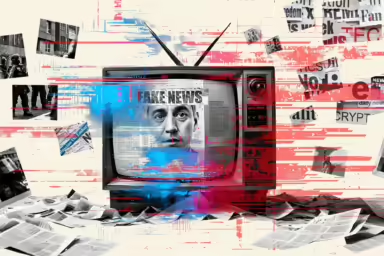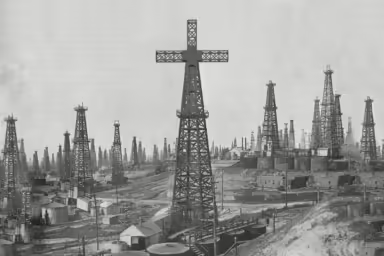While most everyone else in the media figures the Boston bombing story is settled, we’re just beginning to ask questions. Here are some early ones.
 Most of the national and international media have left Boston—and essentially moved on from the Marathon bombing story. But at WhoWhatWhy, we’re just getting started.
Most of the national and international media have left Boston—and essentially moved on from the Marathon bombing story. But at WhoWhatWhy, we’re just getting started.
Why? Because we see a lot of problems with what we’ve been told so far. We’ve been disappointed that the media have failed to demonstrate healthy skepticism while passing along, unchallenged, the (self-serving) assertions of “the authorities.”
It is the job of journalism not only to report what authorities say, but also to confirm their claims, and address anomalies, errors, inconsistencies, outright lies, and cover-ups, large and small.
When it comes to falsehoods of all types, we’ve seen plenty of doozies, and you don’t have to go all the way back to the Tonkin Gulf incident—which helped pave the way for the escalation of the Vietnam conflict. Most people now understand that circa 2002-2003, the George W. Bush Administration knowingly exaggerated and deceived in order to justify a desired invasion of Iraq.
Things have not markedly improved with the Obama Administration. The 2011 “raid that killed Bin Laden” at Abbottabad, Pakistan, went a long way toward bolstering Obama’s “toughness cred,” and was probably a factor in his being re-elected. Yet staggering inconsistencies in official accounts of the raid have never been properly reconciled. The current scandal du jour is over the Obama Administration’s putting out fake story lines on Benghazi to divert attention from how it handled facility security in that troubled location.
Yet even partisans on the attack in each of these cases typically fail to get at the real story – which, in the case of Benghazi, has to do with how the entire “humanitarian intervention” in Libya was, as we reported, a cover for a deadly geo-strategic gamble that has opened a can of worms from which have sprung untold Al Qaeda types.
***
So what about the Boston Marathon bombing, in which innocent people died seemingly at the hands of anti-American monsters? While some insist that under these circumstances everyone, including the media, should prove their patriotism by shutting their eyes and ears, we hope you agree that especially at such times it’s important to ask the tough, even unpopular questions. The Boston story, as we previously noted, is full of question marks and high-stakes implications—all the more reason to dig beneath the screen of official handouts. And, in the coming weeks, that’s just what WhoWhatWhy plans to do.
For now, here are some examples of the things we wish to better understand:
Race Security
We have been told—and see evidence—of a security presence unprecedented at such athletic events. This includes the claims by Alastair Stevenson, a college cross-country coach and frequent marathoner, that he heard announcements of security drills that day and saw beefed up security. It also includes the presence of personnel from the private contractor Craft International, first in the crowd watching the runners, then, after the bombs went off, actively involved in the crime scene investigation. Is there an explanation for this? What exactly were these security people deployed against?
The JFK Library Fire
We’re told that a fire broke out at almost exactly the same time as the Marathon bombing, a short distance away at the JFK library. Although initial reports indicated a possible explosion, we have since been told that it was just an “accident.” We’ve had very few details since then, though the museum did reopen after a number of days.
MIT Cop
We originally heard from reporters that a police officer from MIT was killed during a confrontation with the Tsarnaev brothers. Later, around the time of a highly publicized funeral for the “hero cop,” the authorities quietly revised their story; in the new account, the officer was shot while sitting in his car, perhaps during an attempt to take his gun, though we’ve seen no evidence of this. No explanation of why the Tsarnaev brothers would even have been on the campus, or wanted or needed his gun, nor has hard proof been produced that the brothers were in fact the cop killers.
7-11
In the midst of the manhunt, we were told that the suspects robbed a 7-11 convenience store to obtain cash for a getaway. But later, that scenario vaporized. How did the initial wrong story come about?
How Tamerlan Died
On the night Tamerlan Tsarnaev was reportedly shot by police, then accidentally run over by his fleeing younger brother, CNN broadcast a video showing a crime scene teeming with police, in which a handcuffed man who looks quite a bit like Tamerlan—having been made to strip naked—is being hustled into a patrol car. The reporters speculated at the time that it might indeed be the bombing suspect.
Later on, the police issued a statement saying it was someone else, a case of mistaken identity. Fine. But who was it? Surely by now we can be told the name of that person—and presumably that person would have no problem recounting his harrowing evening. Perhaps the police are withholding his identity at his request—but given all the wild online speculation that the man in the video might have been Tamerlan himself, why not make more of an effort to clear up the matter? (While the original CNN video does not appear to be available online, numerous people copied and posted versions onto YouTube—and can be found there with a search on “naked man Watertown CNN.”)
Missing the Crucial Block
Somehow, the police managed to comb many blocks in Watertown, but not the block on which Dzhokhar was eventually found. As a result, police did not find him. A homeowner, David Henneberry, did—and that story is rather strange. As soon as the governor relaxed the order that everyone stay indoors (why would the police do that if a deadly terrorist was still on the loose?), Henneberry came out to his driveway, took a look at his boat and noticed, according to the Boston Globe, that
something was amiss. The straps weren’t quite right. The pads seemed somehow askew…. Henneberry, a former telephone company technician, climbed a ladder and peeked inside. There was blood. A lot of blood. And on the other side of the boat’s engine box there was a body.
The Dzhokhar Capture Story
Originally, we were told that Dzhokhar Tsarnaev held police at bay during a lengthy and formidable gun battle from the boat where he had taken shelter. We later learned that he was unarmed, and the hail of gunfire had all come from police. We did not learn what the basis for this deadly torrent was—especially because there’s no evidence that police even knew that the body Henneberry glimpsed on the floor of the boat was Tsarnaev’s, or that this bloodied body, which put up no resistance, was an imminent threat.
From NoBos to Rambos
We were told that the brothers demonstrated great bravado and confidence with firearms, yet there’s no evidence that they possessed either the experience or skills for such a hypercharged performance. Ordinary people usually only turn into Rambo types in the movies. (Early stories that the brothers practiced at a firing range appear to have fizzled.)
FBI Monitoring
We were originally told that the FBI had no awareness of the brothers. Later, after reports surfaced that the Russians had warned the Americans about the brothers, the FBI admitted it had monitored them. Why the delay in admitting this? And if the FBI knew the brothers were potential problems, why did the bureau dismiss them as of no interest? The FBI has shown the capacity to be interested in, and a willingness to monitor, almost anyone, including peaceful anti-war protesters—so why the purported lack of interest in these two brothers, given the Russian concern?
How Radicalized Were They?
It was widely reported that in 2010, Tamerlan declared that “I don’t have a single American friend, I don’t understand them.” But in a call to local radio station WEEI shortly after Tamerlan’s death, a good friend of his since 2005—an American—disputed this: “It’s not true—all of his friends were American.” Describing Tamerlan as “happy go lucky,” this American friend said he was “completely shocked” by the turn of events. He said there were no indications of anything amiss or afoot. In fact, he said, Tamerlan had called him just two months ago, and asked him to go skiing, and had been at his house in the past month.
Also, we are told that Tamerlan became more active and radical after the Russians and FBI took an interest in him. What’s this about? Blowback in response to what he felt was bullying by the feds?
Equally dubious is the evidence of his purported conversion. To wit, an article in which the New York Times interviewed some friends of Tamerlan Tsarnaev, and concluded that during a trip last year, as the headline put it, “Suspect in Boston Bombing Talked Jihad in Russia.”
But if you read the report carefully, and think about it contextually, it’s pretty thin gruel. Imagine that you were looking into most any young person who went back to the “homeland”—where the homeland was the scene of war and unrest. Israel, Palestine, Northern Ireland, Kurdistan, etc. How shocking would it be that the young person might discuss his enthusiasm for the “cause” or even professions of interest to “suit up”? Would that be so unusual? Would it point to a probability of someone wanting to kill and maim a large number of innocent people in his adopted country—especially when the adopted country was not the enemy of the people in the homeland?
Brothers in Arms?
For two brothers to become accomplices in this astonishing crime requires enormous bonds of trust, loyalty, and shared values. Yet friends of the brothers indicate no great closeness between the two. The younger one was apparently not influenced by his brother, and had virtually no interest in Islam or Chechen nationalism. Friends of the older brother barely knew his sibling. And when the older brother was in Russia being ”radicalized,” the younger brother was back here, doing normal kid stuff. How did Tamerlan bring Dzhokhar into this dastardly plot?
Burial
The whole story of Tamerlan’s burial is odd. First, police announced that the body was being entombed in an undisclosed location thanks to a “courageous and compassionate individual” who had come forward to cover the costs. What was courageous about that? Courageous to buck public sentiment? Why was it even necessary for a private individual to do this?
Another thing: We later learned that it was the Tsarnaev’s “Uncle Ruslan” who had claimed the body.
This was surprising because of the uncle’s poor relationship with his nephews, and his crucial early role in incriminating them. Within days of the bombing, the uncle had declared Tamerlan “a loser,” implying that he found it totally believable that his flesh and blood would commit this astonishing atrocity. We later learned that he hadn’t had contact with them for years. We also later learned (although not from mainstream news sources) that Uncle Ruslan worked in the oil and gas business and had intriguing connections—and that his ex-father-in-law was a high CIA official with ties to Chechen operations.
Will the burial of Tsarnaev near Richmond, Virginia, 550 miles from the scene of the crime, hinder any potential efforts to exhume his body and learn more about how he died?
Dead (and Almost Dead) Men Tell No Tales
We have a case where one of the suspects was killed, and the other was nearly killed and literally silenced up to this point. Obviously, the key to this case would be to get Dzhokhar into a place where he could speak freely and without fear or coercion. What is happening on that front? There’s been a near blackout of information.
Anonymous Sourcing
This story has seen constant leaks by “sources close to the investigation.” Assuming those leaks are authorized, what is the purpose? Assuming everyone is entitled to a fair trial, these leaks make it harder for Dzhokhar to get one—and consistently advance a hostile narrative.
Kids with Cars
There’s an awful lot of money and fancy cars around this story. Tamerlan had a Mercedes; Dzhokhar’s foreign friends had expensive cars. And the unnamed “carjacking victim”? A 26-year-old engineer who had recently gotten his Masters, he had a brand new $50,000 Mercedes SUV and was “out for a spin” at the time of the alleged carjacking. Remember the classic journalistic advice: “Follow the money?” Maybe it should be Follow the Mercedes.
Cui Bono?
What motivations could anyone have to manipulate this tragedy in which three innocents were killed and hundreds were injured and maimed? What role does international jockeying for access to the tremendous mineral wealth in the republics on Russia’s southern flank play in the actions of terrorists at an iconic American sporting event? As we are reminded time and again, with Iraq (see this and this) with Libya, with Afghanistan, with just about any deep and complex story with global ramifications, you probe a little and pretty soon you’ve struck oil—or some other precious resource. Find a big story that doesn’t have money at its root, and it will be an unusual story, to say the least.
Also, in a time when our civil liberties are eroded and the security state expanded every time terrorists strike, we’d do well to always take a closer look.
GRAPHIC: https://us.123rf.com/400wm/400/400/mtkang/mtkang1109/mtkang110900159/10599209-spider-web-illustration-for-background.jpg



